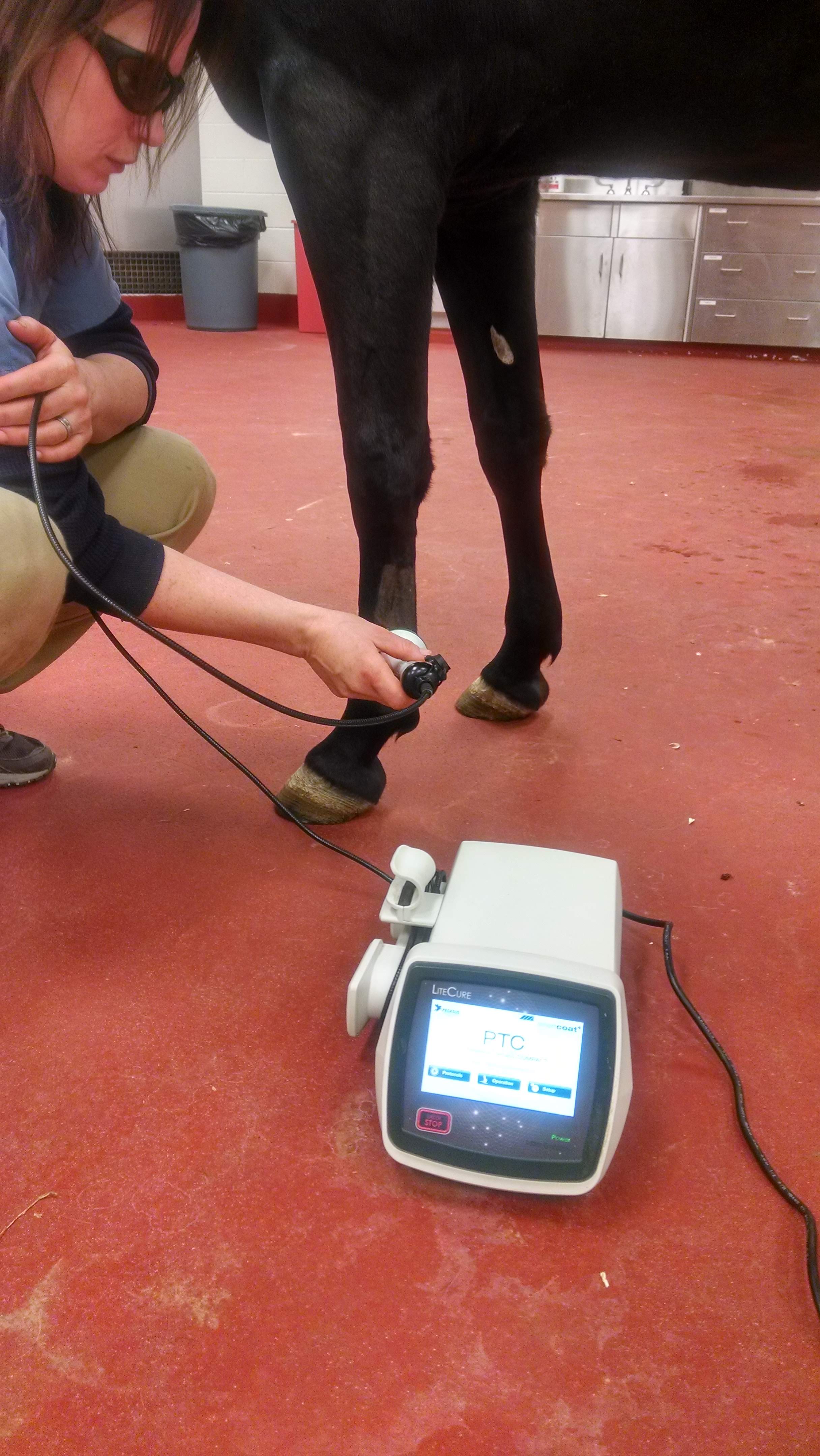Discover the Outstanding Benefits of Equine Therapy for Emotional Recovery
Discover the Outstanding Benefits of Equine Therapy for Emotional Recovery
Blog Article
Just How Laser Treatment in Equine Therapy Is Revolutionizing Veterinary Take Care Of Steeds
Laser therapy has emerged as a transformative technique in equine veterinary care, providing a non-invasive service that expedites recovery and improves total health. The mobility and versatility of laser treatment tools better highlight their growing necessity among veterinarians.
Recognizing Laser Treatment
Recognizing laser therapy is necessary for appreciating its role in equine treatment. Laser therapy, additionally recognized as photobiomodulation, involves the application of certain wavelengths of light to cells, which can cause different organic effects. This therapeutic method harnesses the power of light power to penetrate the skin and underlying cells, stimulating mobile procedures and enhancing cells repair work.
The innovation behind laser therapy is grounded in the principle of photochemistry, where photons are absorbed by chromophores within cells, leading to boosted ATP production and inflection of responsive oxygen species. This, subsequently, promotes mobile proliferation, lowers swelling, and increases healing. Vet specialists make use of different kinds of lasers, including low-level lasers (LLLT) and high-power Course IV lasers, depending upon the details restorative purposes and the nature of the equine condition being dealt with.
Various laser wavelengths and power setups are carefully picked to target various tissue midsts and achieve preferred professional results. Safety procedures are paramount, as incorrect use can bring about thermal damage or suboptimal therapeutic results. Therefore, a thorough understanding of laser therapy's systems and applications is crucial for its efficient application in equine vet practice.
Benefits for Horse Health And Wellness
The myriad advantages of laser treatment for equine health include boosted recovery, pain reduction, and improved flexibility. This advanced treatment modality leverages particular wavelengths of light to permeate cells, boosting cellular function and promoting rapid tissue repair work. The non-invasive nature of laser therapy makes sure marginal stress and discomfort for the horse, assisting in a smoother healing procedure.

Improved flexibility is one more critical benefit, particularly for efficiency and working steeds. By minimizing inflammation and discomfort, and enhancing cells repair work, laser treatment assists in restoring joint feature and muscle adaptability. The collective impact of these advantages is not only a quicker go back to normal task but additionally an overall improvement in the steed's high quality of life. Hence, laser therapy stands as a transformative device in modern equine vet care.
Usual Conditions Treated
Laser therapy has emerged as a flexible treatment choice for a selection of usual equine problems. Additionally, laser treatment is efficient for problems like osteo arthritis, where it helps reduce joint swelling and advertise tissue repair.
Wound administration is an additional location where laser treatment has revealed substantial assurance. Persistent injuries or slow-healing abscess can be specifically tough in steeds, yet laser treatment boosts mobile regeneration and improves blood flow, hence expediting the recovery procedure. In addition, laser therapies have actually been effectively utilized in taking care of unguis conditions such as laminitis and abscesses, easing pain and promoting faster recuperation.
Equine athletes often struggle with performance-related problems like muscle mass soreness and tension fractures. Laser treatment help in decreasing muscle exhaustion and accelerates the recovery of micro-injuries, therefore guaranteeing that horses go back to peak efficiency much more check my site quickly. By resolving these varied conditions, laser treatment is transforming the landscape of vet care, providing a non-invasive, efficient alternative to conventional therapies.
Innovation Behind Laser Treatment

Laser tools used in veterinary medicine commonly utilize low-level laser treatment (LLLT) or chilly laser treatment. Unlike high-powered medical lasers, these devices operate at lower energy degrees, maximizing healing benefits while reducing thermal damage. The power from the laser light promotes adenosine triphosphate (ATP) manufacturing, boosts mobile metabolism, and accelerates tissue repair work procedures.
Modern laser treatment tools for equine therapy is made with adjustable settings to deal with the particular needs of different tissues and conditions. Equine Therapy. Parameters such as wavelength, power density, and treatment duration can be finely tuned, offering tailored therapeutic solutions. Additionally, developments in laser technology have resulted in the advancement of portable, handheld devices, making it simpler for vets to supply treatment in a range of settings, from centers to stables. This technological development is a cornerstone in the reinventing of equine veterinary care.
Success Stories and Study
Showcasing the concrete benefits of laser therapy, various success stories and instance research studies illuminate its transformative impact on equine health. One such instance includes a pedigreed racehorse struggling with chronic tendonitis. Traditional therapies generated minimal improvement, yet after incorporating laser therapy into the routine, the equine exhibited substantial reductions in inflammation and discomfort within weeks, eventually returning to affordable racing.
One more compelling instance includes a dressage equine browse around here detected with serious pain in the back, restricting its efficiency. A vet team utilized low-level laser therapy (LLLT) to target the irritated areas, causing marked improvement in versatility and a notable decrease in discomfort. Over a number of sessions, the equine reclaimed its peak kind, showcasing the efficiency of laser treatment in addressing musculoskeletal problems.
Furthermore, a research study performed at a leading equine facility examined 50 horses with different soft tissue injuries treated with laser therapy. The results were striking: 85% of the equines demonstrated sped up healing times and enhanced wheelchair. These instances emphasize the flexibility and performance of laser treatment in equine medication, supplying a non-invasive, scientifically-backed strategy to boosting recovery and efficiency in steeds.
Verdict
Laser treatment is changing equine vet treatment by supplying a non-invasive therapy that speeds up recovery, minimizes inflammation, and alleviates pain. With its effectiveness in treating a series of conditions, from musculoskeletal injuries to persistent disorders like osteoarthritis, this innovation considerably enhances equine health and flexibility. The transportability and versatility of laser therapy even more underscore its transformative effect on vet methods, solidifying its role as an important device in modern-day equine health care.
Report this page